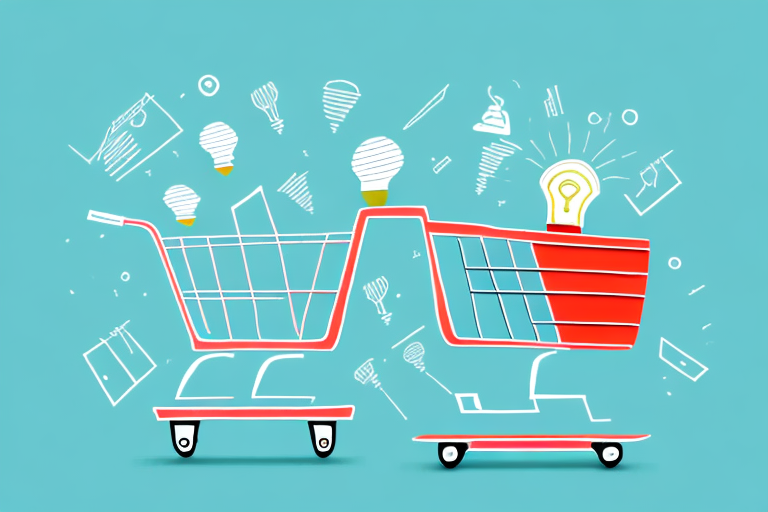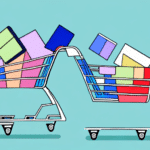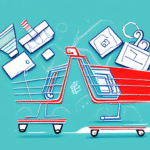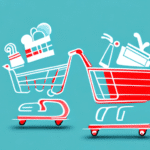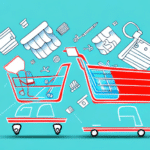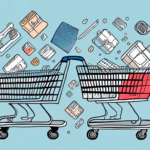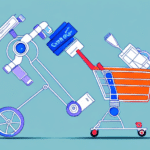Creating Effective Abandoned Cart Recovery Email Campaigns
If you run an e-commerce business, you're probably familiar with the frustration of abandoned carts. It's a common scenario: a customer browses your website, adds products to their cart, and then leaves without completing their purchase. This can significantly hinder your business's success, but fortunately, there is a solution: abandoned cart recovery email campaigns.
Why Abandoned Cart Recovery Email Campaigns Matter for Your E-commerce Business
Abandoned cart recovery email campaigns can help you recover lost sales and boost your revenue. By sending targeted follow-up emails to customers who have abandoned their carts, you can remind them of the items they left behind and encourage them to complete their purchase. According to SaleCycle, the average cart abandonment rate is nearly 70%, making recovery efforts crucial for sustaining revenue streams.
- Recovery Rates: Some businesses report recovery rates of around 20-30 percent.
- Revenue Boost: Effective campaigns can significantly increase overall revenue.
Moreover, abandoned cart recovery email campaigns provide valuable insights into your customers' behavior and preferences. By analyzing the data from these campaigns, you can identify patterns and trends in your customers' shopping habits, such as the types of products they are most likely to abandon or the time of day when they are most likely to make a purchase.
Additionally, these campaigns help build stronger relationships with your customers. By demonstrating that you care about their shopping experience and are willing to assist them in completing their purchase, you can increase customer loyalty and encourage repeat business.
Understanding the Psychology Behind Abandoned Carts
Before effectively targeting and recovering abandoned carts, it's essential to understand why customers leave in the first place. Common reasons include:
- Unexpected Costs: High shipping fees or additional charges.
- Complicated Checkout Process: Lengthy or confusing steps to complete a purchase.
- Distractions: Customers get distracted or lose interest before completing the purchase.
Another significant factor is the lack of trust in the website or the company. This can stem from a poorly designed website, absence of customer reviews or testimonials, or inadequate security measures. Customers need to feel safe and secure when making online purchases. According to Invesp, trust is a crucial component influencing purchase decisions.
Moreover, customers may abandon their carts if they believe they can find a better deal elsewhere. This can be due to non-competitive pricing or a lack of perceived value in your products or services. By offering competitive pricing and highlighting the unique value of your offerings, you can increase the likelihood of customers completing their purchases.
Analyzing Your Customers' Behavior to Improve Your Abandoned Cart Recovery Rate
Creating effective abandoned cart recovery emails requires a deep understanding of your customers' behavior. This involves analyzing data such as:
- Products Viewed: Identifying which products are frequently abandoned.
- Time Spent on Website: Understanding how engaged customers are.
- Previous Purchase History: Tailoring emails based on past behavior.
Additionally, demographic information like age, gender, and location can help you create more targeted and personalized emails. For instance, if a significant portion of your customers are millennials, incorporating trends and language that resonate with this demographic can enhance engagement.
Adopting a data-driven approach to abandoned cart recovery not only improves conversion rates but also provides insights that can inform broader marketing and sales strategies.
Crafting Compelling Subject Lines that Increase Open Rates
The subject line of your abandoned cart recovery emails is crucial, as it is the first thing your customer sees. To increase open rates, consider the following strategies:
- Personalization: Include the customer's name or reference specific items in their cart.
- Urgency: Use time-sensitive language to encourage immediate action, such as "Your cart is waiting!" or "Complete your purchase within 24 hours."
- Social Proof: Incorporate elements like "Join thousands of satisfied customers" to build trust.
It's also important to keep subject lines concise. Many email clients truncate overly long subject lines, so aim for 50 characters or less to ensure full visibility. Additionally, ensure that the subject line accurately reflects the email's content to avoid misleading or confusing your customers.
Designing Attention-Grabbing Email Templates that Drive Click-Through Rates
The design of your abandoned cart recovery emails significantly impacts their effectiveness. Here are key elements to consider:
- Visual Appeal: Use clean, visually appealing layouts with high-quality product images.
- Clear Calls-to-Action (CTAs): Ensure CTAs are prominent and encourage immediate action, such as "Complete Your Purchase" or "Return to Your Cart."
- Product Reminders: Include images and descriptions of the items left in the cart to jog the customer's memory.
Personalization is another critical aspect. Personalized emails, which address the customer by name and tailor content based on their interests and purchase history, have higher open and click-through rates compared to generic ones. According to Campaign Monitor, personalized emails deliver six times higher transaction rates.
Personalizing Your Emails to Boost Engagement and Conversions
Personalization is key to creating effective abandoned cart recovery emails. Here’s how to implement it effectively:
- Use Customer Names: Address customers by their first name to create a personal connection.
- Reference Specific Items: Mention the exact products left in the cart to remind customers of their interest.
- Segment Your Audience: Tailor emails based on behavior and preferences, such as sending different messages to first-time visitors versus returning customers.
Beyond names and product references, consider customizing the tone and language to match your brand and resonate with your audience. A well-designed and personalized email not only increases engagement but also fosters a sense of trust and loyalty.
Timing is Key: Finding the Right Time to Send Abandoned Cart Recovery Emails
Timing plays a crucial role in the success of your abandoned cart recovery email campaigns. Here are some strategies:
- Immediate Follow-Up: Send the first email within an hour of cart abandonment to catch the customer while the purchase is still fresh in their mind.
- Gentle Reminders: If there’s no response to the first email, send a second reminder after 24 hours.
- Incentivized Follow-Up: A third email sent a week later can include a special offer or discount to entice the customer to complete their purchase.
Experimenting with different timing strategies and analyzing their effectiveness can help determine what works best for your audience. According to a study by Campaign Monitor, emails sent within the first 24 hours have the highest conversion rates.
A/B Testing Your Campaigns: Identifying What Works Best for Your Business
A/B testing is an invaluable tool for optimizing your abandoned cart recovery email campaigns. By testing different elements, you can identify what resonates best with your audience. Here’s how to approach A/B testing:
- Test One Variable at a Time: Whether it’s subject lines, email copy, images, or CTAs, isolate variables to accurately assess their impact.
- Sample Size: Ensure your tests have a large enough sample size to achieve statistically significant results.
- Analyze Results: Use the data to determine which variations perform better and implement the winning strategies across your campaigns.
A/B testing not only helps refine your email content but also provides deeper insights into customer preferences and behaviors, enabling more effective future campaigns.
Tips and Best Practices for Writing Effective Abandoned Cart Recovery Emails
To write effective abandoned cart recovery emails, incorporate the following tips and best practices:
- Keep It Concise: Deliver a clear and straightforward message without overwhelming the customer with too much information.
- Offer Incentives: Provide discounts, free shipping, or other incentives to encourage the customer to complete their purchase.
- Emphasize Urgency: Use language that creates a sense of urgency, such as “Limited Time Offer” or “Act Now.”
- Personalize Content: Address the customer by name and include specific details about the items left in their cart.
- Include Clear CTAs: Ensure that call-to-action buttons are prominent and lead directly to the cart or checkout page.
Additionally, regularly testing and optimizing your emails by experimenting with different subject lines, email copy, and incentives will help you find the most effective strategies for your audience.
Using Discounts and Special Offers to Encourage Customers to Complete Their Purchase
Offering discounts or special offers can be a powerful motivator for customers to complete their purchase. Here are some approaches:
- Percentage Discounts: Offer a percentage off the total order to incentivize completion.
- Free Shipping: Waive shipping fees to make the purchase more appealing.
- Buy-One-Get-One (BOGO) Offers: Encourage additional purchases by offering a free or discounted second item.
However, use discounts judiciously to avoid devaluing your products and harming profit margins. According to a report by Kalungi, strategic discounting can lead to increased customer satisfaction and loyalty when implemented correctly.
Creating Urgency with Limited-Time Offers and Countdown Timers
Limited-time offers and countdown timers can create a sense of urgency, encouraging customers to take immediate action. Here’s how to implement them:
- Limited-Time Discounts: Offer a discount that expires within a short time frame to prompt quick decisions.
- Countdown Timers: Include visible countdown timers in your emails to remind customers that the offer is about to end.
These tactics leverage the fear of missing out (FOMO), a powerful psychological driver. Studies have shown that creating a sense of urgency can significantly increase conversion rates by motivating customers to act before the offer expires.
Leveraging Social Proof: How Reviews and Testimonials Can Help You Recover More Abandoned Carts
Social proof, such as customer reviews and testimonials, can be a powerful motivator for customers to complete their purchases. Here’s why:
- Build Trust: Positive reviews and testimonials reassure customers about the quality and reliability of your products.
- Reinforce Product Value: Highlighting what other customers appreciate about the product can remind potential buyers of its benefits.
Including social proof in your abandoned cart recovery emails can provide the necessary reassurance and encouragement for customers to proceed with their purchase. According to BrightLocal, 92% of consumers read online reviews, underscoring the importance of social proof in the purchasing decision process.
Measuring the Success of Your Campaigns: Tracking Key Metrics and KPIs
Tracking key metrics and KPIs is essential to measuring the success of your abandoned cart recovery email campaigns. Focus on the following metrics:
- Open Rates: Indicates how many recipients are opening your emails.
- Click-Through Rates (CTR): Shows how many recipients are clicking on links within your emails.
- Conversion Rates: Measures the percentage of recipients who complete a purchase after receiving the email.
- Revenue Generated: Tracks the total sales attributed to your recovery campaigns.
Analyzing these metrics helps identify what’s working and what needs improvement. Tools like Mailchimp and HubSpot offer comprehensive analytics to monitor and optimize your campaigns effectively.
Conclusion: Putting It All Together and Taking Action on Your Abandoned Cart Recovery Strategy
By understanding the psychology behind abandoned carts, analyzing your customers' behavior, and implementing effective email marketing strategies, you can significantly improve your abandoned cart recovery rate and boost your e-commerce business's success. Remember to:
- Personalize your emails to create a personal connection.
- Optimize the timing of your emails to maximize impact.
- Utilize A/B testing to refine your approach continually.
- Incorporate social proof and compelling incentives to encourage conversions.
- Track key metrics to measure success and make data-driven decisions.
Continuously experiment, test, and gather data to refine and enhance your abandoned cart recovery strategy over time. Implementing these best practices will not only help recover lost sales but also foster stronger relationships with your customers, driving long-term growth and success for your e-commerce business.













